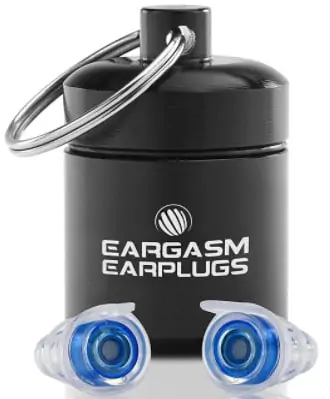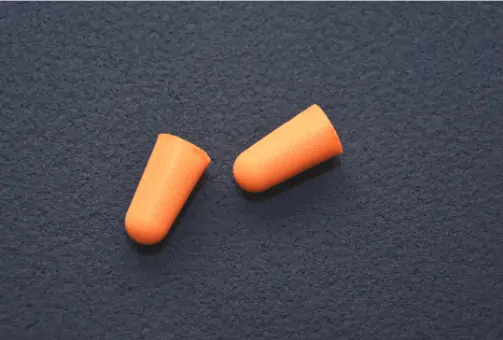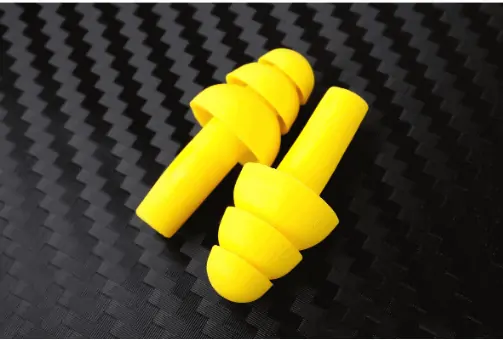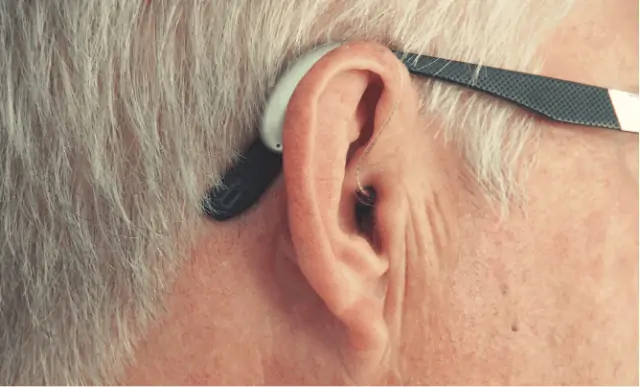Total silence ear plugs are useful in a range of situations. Whether you need help getting to sleep, want some peace on a long flight, or just want to block out a noisy neighbor, earplugs are your best friend.
My experience with normal earplugs left me wanting more sound attenuation. This led me to research total silence earplugs for better results.
In this article, I’ll share my top picks for noise canceling earplugs along with a comprehensive buying guide so you know what to look for.
If you’re in a rush, here’s a quick summary of my top picks:
Best for Sleeping

-
Noise Reduction* 34
Best for Work & Events

-
Noise Reduction* 16
Best Budget

-
Noise Reduction* 33
*Noise Reduction Rating (NRR)
Do 100% Soundproof Ear Plugs Exist?
Soundproof earplugs technically don’t exist, although some designs block out almost all noise. The reason they don’t completely soundproof is because a portion of vibrations transmit through your cranial bone rather than the ear itself.
Sound waves travel as vibrations, which reach the eardrum through the air in the ear canal. This is the standard form of transmission, and you can find out more information in this video on how hearing works.
But some vibrations enter the ear through your cranial bones, known as the bone-conduction pathway. For this reason alone it’s impossible to completely block sound to reach your eardrum.
Blocking your ears with earplugs will attenuate a large proportion of loud noises, but some will still get through. This is particularly true for low-frequency sounds because they transmit more easily through things.
So, while 100% soundproof earplugs don’t exist, this doesn’t mean you can’t block out the vast majority of sounds. Importantly, loud and distracting noises will be much quieter, meaning you’ll have a greater sense of peace and focus.
Our Top 5
Below are my top picks for complete silence earplugs. They cater to a range of budget options and needs, so hopefully you’ll find the right choice for you.
1. Eargasm High-Fidelity EarPlugs

Eargasm high fidelity earplugs are great passive filter earplugs that reduce background noise but retain sound quality. They’re suitable for musicians or for use at work.
They’re made from silicone, so are comfortable and easy to fit in your ears. Each set comes with 2 shells. While they won’t offer a perfect fit on all ear sizes, you’ll at least have some flexibility.
The only real downside of these earplugs is that they’re not suitable for sleeping. This is because they have a protruding tab for removal, which will get in the way if you lie on your side.
- High-quality silicone for all-day wear.
- NRR of 16dB.
- Suitable for work, concerts, or riding motorbikes.
- Easy to clean with soap and water.
- Not suitable for sleeping.
2. Mighty Plugs Beeswax EarPlugs

Mighty Plugs make their earplugs from beeswax. This not only provides a great fit in your ears, but also makes them suitable for swimming because they’re completely waterproof.
As moldable earplugs, all you need to do is heat them in your hand before inserting them into your ear. This makes them quick and easy to use at any time.
Importantly, they’re low profile and so are suitable for all sleeping positions. Their NRR is 34dB, which is almost the closest to noise canceling earplugs that you’ll get.
My only critique is that they’re not as easy to clean. The beeswax means you can’t wash them in hot water, but cold, soapy water will do as good a job.
- Completely natural ingredients – suitable for those with sensitivities.
- NRR of 34dB.
- Suitable for swimming, sleeping, and more.
- Moldable and reusable.
- Not as easy to clean as silicone.
3. Mack’s Ultra-Soft Foam EarPlugs

These soft foam earplugs from Mack’s are disposable, but you get 50 pairs in a pack. This makes them good value for money but does come with the potential drawback of running out.
They’re made from Comfy Cush foam, which expands slowly after compression. This helps to ease pressure on your ears after insertion. Also, it makes them suitable for sleeping, traveling, and for protecting your ears from loud noises.
For foam earplugs, their NRR of 33dB is impressive. Again, this improves their flexibility and makes them truly multi-use.
The only downside is that they’re not reusable. You might run out, but having 50 pairs at least means you’ve got plenty of notice to order more.
- NRR of 33dB.
- Slow-expanding soft foam.
- Suitable for sleeping or traveling.
- Single-use.
4. Loop High Fidelity EarPlugs

Loop uses passive filter technology in their reusable earplugs. This helps to protect your ears from loud noises while maintaining sound clarity. They’re suitable for concerts, nightclubs, and musicians.
Their NRR is 20dB, and while this might seem low, it’s because they’re filter earplugs. Importantly, they’re designed to not completely block noise but filter out potentially harmful volumes.
Each set comes with 4 tip sizes, giving you a great level of flexibility. These would be a good choice for those with small ears due to the range of tips.
My only downside is that they’re a bit bulky in your ears and so might fall out. But you can get around this by choosing the right sized tips.
- Range of silicone tips for a good fit.
- Suitable for canceling background noises and harmful volumes.
- Easy to insert and comfortable for all-day use.
- Important to choose the right tips so they fit properly.
5. Decibullz Molded EarPlugs

These earplugs from Decibullz are ideal for drastically reducing background noise while still offering a level of hearing. As a result, they’re suitable for things like traveling, working, and shooting.
They’re easy to mold to your ear shape using warm water, and can be remolded time and time again. This is helpful if the fit isn’t perfect yhr first time or after prolonged wear.
The set also comes with different size flange tips for even more flexibility on fit. All this adds up to an NRR of 31dB, which is more than enough for most applications.
The only issue is that they’re not suitable for side-sleepers because of their high profile. But they’re suitable for back sleepers who don’t want complete silence.
- Snug fit with good flexibility in sizing.
- Reusable and easy to remold.
- NRR of 31dB.
- Suitable for work, travel, swimming, and shooting.
- Not suitable for side sleepers.
Considerations before Buying
As you may already know, there are different kinds of earplugs. But which are right for your needs, and how does this affect pricing? I’ve put together this comprehensive buying guide to answer these questions and more.
Types of earplugs
The first important point is the type of earplug you choose. This’ll impact things like comfort level, whether you can reuse them, and where you’ll use them.
Foam
Foam earplugs are the cheapest and most widely available option. These are probably the type you’re most familiar with but they are the least effective at attenuating sounds.

They are single-use and don’t sit perfectly in your ear canal. What’s more, they’re not the most comfortable type of earplugs for this reason.
Moldable
Moldable earplugs are often made from silicone. This makes them pliable and so achieves a more snug fit in your ear canal. In turn, this blocks out more noise than foam earplugs. Some also have foam tips for greater sound attenuation.

But you might also find moldable ones made from wax. These are a better option if you’re sensitive to silicone, and they usually contain other natural materials.
Importantly, moldable earplugs are reusable, which is good because they’re more expensive.
Filter
Filter earplugs reduce volume while retaining audio quality. They’re designed for use at concerts or in nightclubs for this reason. You’ll find either active or passive versions.
Active earplugs rely on noise-canceling technology similar to that found in headphones. They’re designed to let in low-level noises while blocking louder, potentially damaging noises.

They’re reusable but are quite bulky, making them unsuitable for sleeping. Also, they let in sounds like talking, so might not be a good idea for use at work.
Passive earplugs contain valves that shut when sound waves with enough force make contact. This means that the filter only works when it’s noisy, giving you the ability to hear when it’s quieter.
Like active filter earplugs, passive ones aren’t suitable for sleeping because they have a large out-of-ear profile. They’re mainly designed for use at concerts or when shooting.
Noise Reduction Rating (NRR)
Ideally, complete silence earplugs should include a Noise Reduction Rating (NRR). This determines how effective they are at reducing sounds and is measured in decibels.
For example, a NRR of 30dB can block up to 30dB of environmental noise. In practice, this is true if the earplugs fit perfectly in your ear. In most situations, consider the actual attenuation to be half of the NRR listed.
The highest rating is 33dB, but most earplugs sit between 20 and 30dB. If you need as close to silence as possible, opt for an NRR over 30dB.
It’s important to get the right level of sound attenuation for your needs. Exposure to loud noises can lead to hearing loss or permanent damage to your inner ear.
As this table from the CDC shows, you need to consider both the volume of the noise and your length of exposure:
| Everyday Example of Noise | Average Sound Level (dB) | Typical Consequences |
|---|---|---|
| Quiet talking – road traffic | 0-80 | No damage |
| Gas-powered lawnmower | 80-85 | Hearing damage possible after 2 hours of exposure |
| Motorbike | 95 | Hearing damage possible after 50 minutes of exposure |
| Sporting event | 100 | Hearing loss possible after 15 minutes |
| Maximum volume for TV or stereo | 105-110 | Hearing loss possible in less than 5 minutes |
| Shouting directly in the ear | 110 | Hearing loss possible in less than 2 minutes |
| Standing near a siren | 120 | Pain and injury |
| Fireworks | 140-150 | Pain and injury |
While many of these aren’t typical activities, the chart at least gives you some idea of typical noise levels and why you should be wearing hearing protection.
Of course, if you just want some peace while working or sleeping, this factor isn’t as important. But you’ll still want to choose earplugs with a reasonable NRR, particularly if your partner snores!
Disposable or Reusable?
The only disposable type of earplugs is foam ones. All others are reusable, which is both more sustainable and better value for money. That said, you can buy foam earplugs in bulk, which reduces the cost.
If you’ll be using them regularly, such as for sleeping or at work, reusable earplugs are the obvious choice.
The only major advantage to disposable ones is cleanliness, but you can clean silicone earplugs very easily. Battery-powered ones are harder to clean but it’s still possible.
Size and Shape
Choosing the right size for your ears is vital for both noise reduction level and your health. Improperly sized earplugs can damage your delicate middle ear, while earplugs that are too small will do a poor job.
Foam earplugs come in various sizes and can expand or be compacted when necessary. Reusable earplugs, however, come with different tips or are available in various sizes.
If you know you’ve got irregular shaped ear canals, moldable earplugs will be your best bet. They’re also a good choice for people with small ears because they can be customized entirely to your ears.
Purpose
Your intended use for earplugs is arguably the most important factor. Earplugs for work will need to attenuate more sound than those for sleeping, for example.
Travel
If you need earplugs for travel, silicone or moldable earplugs will be your best bet. They block out most sounds and will provide a peaceful experience. Of course, they won’t completely block loud or low-frequency noises, so bear this in mind.

Sleeping
Earplugs for sleeping are one of the most common uses. You’ll want something that’s comfortable and effective against sounds like snoring, talking, or TV sounds.
Again, moldable or silicone will be the best earplugs for sleeping. Smaller earplugs will be a better option if you’re a side-sleeper, while you’ve got more choice if you sleep on your back or front.
Low-profile designs will put less pressure on your ears if you sleep on your side, so bear this in mind when making your selection.
Work
If you want to block out the majority of distractions while at work, filter earplugs will be a good choice. They’ll allow you to still hear when people speak to you but will block out background noise.
Alternatively, foam earplugs will also work because they don’t attenuate as much noise as other types. This’ll allow you to have some peace while not being completely shut off from those around you.

Making your Selection
These buying factors should help you narrow down your choices. I consider them in my recommendations above, but if none of these options is suitable at least you’ll have some useful information for choosing a good pair.
Our Verdict
I hope this guide has given you some useful information on choosing the best total silence earplugs for your needs. If not, I hope you’ll at least remember some of the amusing names companies chose for their products!
My top pick is the Mighty Plugs Beeswax earplugs. This is because they’re completely natural, provide a great fit, and are reusable. In short, they offer great value for money.
If sticking some piece of foam into your ear for long hours is not your thing, you might consider other ways to claim peace. Masking sounds white noise machines can be a good way to focus at work or find sleep (Check here to learn about noise colors). Or you could even invest in soundproofing solutions.
Let us know what you think in the comments below. Thank you for reading,
Peace & Zen-Up!


3 thoughts on “5 Best Total Silence Ear Plugs: A Guide on How to Reclaim Peace”
This was a very thoroughly written and informative article, and especially with it’s comparison value.
Thank you!
DEAR MR LUDOVIC
WHICH DEVICE BLOCKS
MAXIMUM SOUND/ NOISE.
THANK YOU AND BEST REGARDS.
SLAIMAN SHAYA.
Hi there,
Technically you should look at the product with the highest NRR rating. In my list, it’s the Beeswax earplugs. But you have to consider the use scenario and level of comfort as well.
If it’s for work, I’d go with something with lower NRR but easy to plug-in plug-out.
I hope it helps,